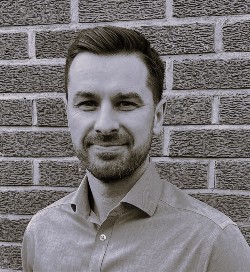Scientists in Sweden have made what looks to be a significant breakthrough in the quest to establish exactly how exercise leads to better health and fitness.
It’s an accepted principle that exercise helps us attain better levels of fitness and reduce the risk of many cardiovascular diseases, but the biology behind this has long remained unclear. Now, researchers at the Karolinska Institute in Stockholm believe they may have cracked the case, concluding that regular exercise has the power to change the shape and functioning of our genes by altering our DNA.
“Through endurance training – a lifestyle change that’s easily available for most people and doesn’t cost much money – we can induce changes that affect how we use our genes and, through that, get healthier and more functional muscles that ultimately improve our quality of life,” the study’s lead researcher, Maléne Lindholm, told The New York Times.
The results of the study, which was published in the journal Epigenetics*, may have future implications for the prevention and treatment of obesity, diabetes and heart disease.
One-legged cycling
The small study recruited 23 young, healthy men and women who performed supervised, one-legged cycling, where the untrained leg served as a control. The participants took part in a 45-minute training session, four times a week over the course of three months.
Performance was measured in both legs before and after training, and after the three months there were clear physical improvements evident in the exercised leg that were not present in the idle leg. Scientists were then able to home in on the changes at cellular level.
Gene altering
By using cutting-edge genomic analysis, the researchers found that exercise has the ability to change the methylation patterns on the genome of muscle cells, altering the proteins these genes express. This, in turn, affects the physiological responses elsewhere in the body. A large majority of these genes play a role in energy metabolism, insulin response and inflammation in muscles – regulating how fit these muscles, and in turn our bodies, can become.
Dr Carl Johan Sundberg, a pharmacology professor at the institute who also worked on the study, adds: “We found that endurance training in a co-ordinated fashion affects thousands of DNA methylation sites and genes associated to improvement in muscle function and health.
“This could be of great importance for the understanding and treatment of common diseases such as cardiovascular disease, but also for how to maintain a good muscle function throughout life.
“Interestingly, we also saw that there were epigenetic differences between male and female skeletal muscle, which may be of importance to develop gender-specific therapies in the future.”
Lindholm says another focus could be looking into whether these genetic changes would remain if someone were to stop exercising, as well as the impact different types of training have on genes.
*Lindholm ME & Sundberg CJ et al. An integrative analysis reveals coordinated reprogramming of the epigenome and the transcriptome in human skeletal muscle after training. Epigentics. December 2014






















































